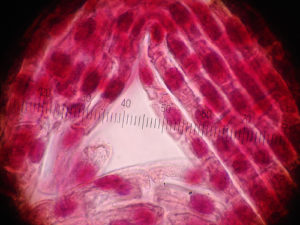Helping scientists do science education research: A new resource
 Scientists who are interested in investigating learning in their classrooms can sometimes feel stymied by the unfamiliar methods and terminology and unsure about effective approaches. To supplement existing guides, the American Society of Cell Biology publication CBE—Life Sciences Education recently added Research Methods Essays to their regular repertoire.
Scientists who are interested in investigating learning in their classrooms can sometimes feel stymied by the unfamiliar methods and terminology and unsure about effective approaches. To supplement existing guides, the American Society of Cell Biology publication CBE—Life Sciences Education recently added Research Methods Essays to their regular repertoire.
In the words of Erin Dolan and Elisa Stone, the essays are meant to help scientists understand essential questions for doing science research such as, “What do social scientists mean by ‘theory’ and ‘theoretical framing,’ and how can learning theories and other relevant knowledge be used to inform the design and interpretation of biology education research? What constitutes a case study, and why are case studies and other qualitative research traditions important for understanding teaching and learning? What are exemplary uses of mixed methods? What types of research questions or problems necessitate using experimental, quasi-experimental, and comparison studies? How can we measure learning and other important education-related variables in ways that are meaningful for making generalizable inferences? And why are the metrics we use every day to assess learning in our classrooms, such as exam scores and course grades, insufficient to accomplish this goal?”
The first essay in this series discusses the importance of using effect size analysis to understand the true impact of different teaching methods on student learning (Maher, Markey, and Ebert-May, 2013), while the second describes essential components for effectively measuring students’ attitudes about learning science (Lovelace and Brickman, 2013).
For those looking for bite-sized essays to supplement existing resources on doing science education research, this feature promises to be valuable.
Other resources:
- Scholarship of Teaching and Learning: A Guide from the Vanderbilt University Center for Teaching
- Discipline-Based Education Science Education Research: A Scientist’s Guide
- Nuts and Bolts of Chemical Education Research

Leave a Response